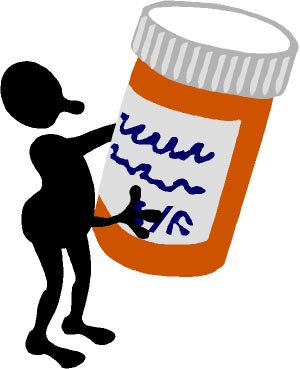Inappropriate Behavior by Kids with Emotional and Behavioral Disorders
(Pertains to educational law in the United States
-If a disabled youngster exhibits inappropriate behavior that
-interferes with the education of
self or others, or
-prevents the teacher from teaching,
the IEP team must address the problem.
-Behavioral concerns must be addressed in several places in the student's
IEP document:
-present levels of educational performance
-goals and objectives
-services, modifications, and supports
-criteria for assessing progress
-A "behavioral intervention plan" (BIP) is to be attached to the IEP.
-?What's a "BIP"?
-no guidance is provided in the law (or
the regulations that explain the law)
-the form of the BIP is left up to the
discretion of state/local officials
(if they wish to designate a specific format)
-the BIP must include positive interventions
(not
just better ways to punish)
-the BIP should be based on a "functional
behavioral assessment" (FBA)
| Click here to go the the page concerning how to conduct an FBA |
-Either before or within 10 days of
disciplinary action by the school administration:
-An existing BIP must be revised (because
it obviously ain't workin').
-If a BIP does not yet exist, an IEP team
(also
known in some places as the student
support team, school based support team, committee on special education,
etc.)
meeting must convene to develop an assessment plan.
-In both of the above cases, if the student is being sent to IAES
("Interim
alternative
educational setting"...for
up to 45 days), the IEP team must assure
that the behavior
that resulted in this
action is addressed in the IAES setting.
More on IDEA 97 and Discipline
?Can disabled kids be punished in the same way
as non-disabled?
-Yes (with
a few notable exceptions)
-Administrators may unilaterally:
-punish (e.g.,
detention, restrictions on movement)
-suspend
(out
of-school) up to 10 days (there is
argument over whether this can be
done several times or whether it is 10 cumulative
days in one academic year) without
providing educational services
-suspend
(in-school)
more than 10 days if the in-school suspension
is not:
-overused (a vague and nebulus term that is causing dispute)
-used repeatedly (also vague)
 In
school suspension?
In
school suspension?
-send the student
to another setting for 10 days or less
-assign to "Interim
Alternative Educational Setting" (IAES) for up to
45 days for
certain acts
-Assignment to an IAES must be done within
10 days of administration becoming aware of:
-a dangerous or seriously disruptive isolated
incident
-an ongoing pattern of misbehavior
-a student knowingly:
-possessing,
purchasing, or selling illegal drugs 
-selling a controlled substance (i.e., prescriptions, alcohol, and maybe cigarettes)
 ....
.... ...
...
-possessing
a weapon (gun, knife blade of a certain length, ?pencil? ![]() )
)
?What instruments qualify as a weapon?
-"...a device, instrument, material, or substance that is
used for or is capable of causing death or serious bodily injury." (wording
from the regulations that interpret the law)
?What if the youngster is a danger to
others (or self), but has not (yet?) brought
a weapon or drugs to school?
-A hearing officer may order a 45-day
change in placement if:
-School officials can provide substantial
(beyond
a preponderance of) evidence that
keeping the student in
the current setting is likely to result in injury to self or others
and:
-reasonable
efforts
were made by the school to minimize risk of harm
-the IEP
had goals/objectives addressing behavior
-the IEP
had a BIP attached (containing positive interventions/practices)
-the IEP
was implemented as written and intended
?If the hearing officer rules in favor of removal,
where is the students sent to?
-the IEP Team determines the IAES placement
?What if the hearing officer decides against
the district?
-the district may still seek a court order
for removal.
?What are the requirements of an IAES?
-the IAES can NOT be located in
the present school environment
-the general education
curriculum must be continued
-all goals, services & modifications
listed in the IEP must continue
-the IAES must address the behavior(s)
that led to the IAES placement
?What should be done back at the home school
while the student is in the IAES?
-The IEP team must consider whether:
-the behavior was
an isolated incident or is likely to reoccur 
-the pre-IAES environment
was appropriate for this student
-another evaluation
is necessary to gain more information
and may/might:
-revise the
IEP to change:
-placement
-programming
-the "BIP"
-conduct a manifestation
determination
(see the page on manifestation determination for more information)
References
http://www.ideapractices.org
| Click here to return to the EBD Teacher page |